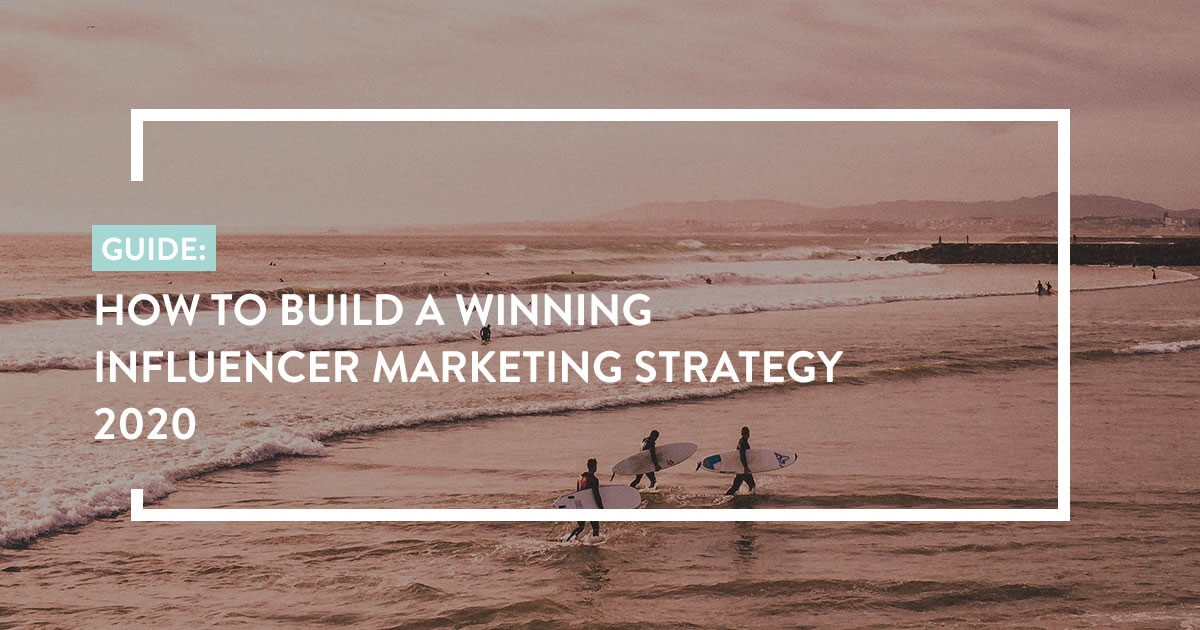Trendspotting for the new year has come to be as natural as turkey for Christmas dinner. In this blog post, we share 8 influencer marketing trendspotting tips for 2020 – What major changes are we seeing in the social platforms and what will be especially important if you want to be successful in influencer marketing 2020?
Influencer marketing trends 2020
From sudden Instagram updates to company goal shifts, here are the influencer marketing trends of 2020 that you need to be aware of:
1. Instagram hides “like” counts
Hiding likes is not a new phenomenon on Instagram, but the feature was rolled out globally in early 2019 in Canada, and later tested in the US, Japan, Brazil, and Australia. Now Instagram has begun to hide like counts in Sweden too and some influencers have announced that their followers can no longer see the likes for the posts.
Instagram CEO Adam Mousseri announced in a statement that the main reason behind this is that they want to depressurise the platform and eliminate the competition momentum indicated by the likes – taking into account the platform’s younger target audience. The idea is that users should instead focus on inspiring and interacting with other people rather than competing against each other.
But how does this affect influencers and brands? Read everything you need to know about the update in this blog post!
2. Will Instagram begin hiding followers too?
What is the next step after Instagram begins to hide like counts? It is now being speculated whether the next step of the platform will be to also start hiding the number of followers. We hope to hear more about this in 2020, but until then – keep your eyes open!
Instead of focusing on likes and the number of followers, the trend is moving towards using Instagram’s Explore Page, which may be a direct consequence of the fact that today’s social media users are increasingly demanding more personalised and relevant content. Instagram itself describes the feature: “In Search and Explore, you can find photos and videos that you might like from accounts you don’t yet follow. You may also see curated topics we think the Instagram community will enjoy.” To find the Explore Page, click on the magnifying glass at the bottom of the Instagram app. When the focus is no longer on quantitative figures, such as likes and followers, this may be another step towards higher demands for quality content from users.
3. More people understand the value of turning their customers into influencers
Did you know that 88% of consumers trust user reviews as much as personal recommendations? Therefore, by 2020, we are watching out for more companies to understand the value of turning their customers into influencers. It means letting customers spread the word about your company, so-called “social proof,” to influence future or existing customers.
Turning customers into influencers not only works for companies in B2C but also in B2B! For B2B companies, social proof could be a case study or to have customers participate in so-called video testimonials. For B2C companies, this can be online reviews or User Generated Content. Before 2020, we also see that more companies are implementing Customer Loyalty Programs – in the end, it always comes down to person-to-person, regardless of which industry you are operating in.
4 … And to turn their employees into influencers!
Turning employees into influencers as well as customers is another trend we see becoming more and more evident for the coming year. According to Nielsen, recommendations we receive from friends and family are the most effective type of marketing. A recommendation from an influencer can, in many cases, be similar to that of a friend, since many of us follow influencers as closely as good friends.
Your employees are thus very credible influencers for their personal networks and, like an influencer, can produce positive results both in recruiting new employees and also when it comes to employer branding. Does this sound interesting? Read more about how you can use influencer marketing for your recruitment in this blog post!
5. Youtube’s audience is getting older and more people are starting to use IGTV
For some time, YouTube has been a channel with a mostly younger audience – but not anymore! Although YouTube is well-represented by all ages, its use is greatest among the age group 12-15, according to Sweden and Internet 2019. Although user behaviour differs to a certain extent, we see that the channel is now beginning to increase in age. Whereas most profiles on Youtube were aimed at a target group in their teens, we now see profiles appearing with a target group of 30 years of age and up.
Another channel to keep an eye on for the coming year is Instagram TV, also called IGTV. Will viewers switch from YouTube to IGTV in 2020?
6. Companies will be quicker to catch onto viral trends
Companies who are quick to catch onto viral trends is something we believe we will see more of in 2020. One example is Circle K, which came up with a quick response when the cell phone holder was named the Christmas Gift of the Year for 2019 – a picture of a cell phone in a hot dog tray increased engagement by 135%! Another example is when Lego recently gave a nod to Tesla and shared a picture of the Lego version of Tesla´s recently launched vehicle “Cybertruck”. Thanks to this post, LEGO increased its engagement by as much as 500%. Our tip is to dare to be innovative, humorous, and flexible in your marketing strategy, without putting all your internal resources into it.
7. More companies are recognising the value of using Influencer Generated Content (IGC)
We see using the content that influencers create during activation as an important trend for 2020. The foremost strength of User Generated Content (UGC) is its high credibility and authenticity – it is a person with his or her own voice behind it. When you let an influencer create content for you (Influencer Generated Content = IGC), you can achieve the same effect. People relate better to a message when it comes from a regular person, rather than from a company – it is inherent in our nature. In many cases, the influencers you choose to work with are also part of your target group for the product or service in question, which provides you with content created for your target audience and by your target audience. Isn’t that smart?
Want to learn more about how your influencer marketing can become a gold mine for content? Check out this blog post!
8. Influencers choose collaborations based on corporate values
The fact that influencers are becoming increasingly value-driven in their choice of collaborations is something that we have already seen in 2019, and we expect that this will increase dramatically in 2020. Common issues that are relevant to influencers who want to know more before deciding to collaborate with a company are, for example, gender equality and climate concerns. Therefore, make sure that you and your company have a clear valuation plan that you can communicate to the profiles with whom you want to collaborate. Of course, this is an important aspect to consider not only when it comes to influencer marketing, but also when looking at your overall business.
Good luck with your influencer marketing ventures in 2020!



